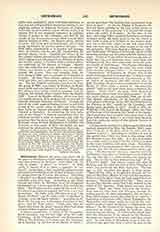

Gezireh (or DJEZIREH), seat of two Catholic residential sees, one Chaldean, the other Syrian. The Chaldean diocese has been known, at least since 410, as Beit-Zabdai (“Notices et extraits des manuscrits”, Paris, XXXVII, 272). Its bishop, John, assisted at a council in 497 (op. cit., 310, 316). Under the Nestorians the diocese was regarded as an episcopal, sometimes as an archiepiscopal see. Later, it was united to Quardou, a diocese of the Kurds, situated on the opposite bank of the Tigris (op. cit., 680). Since the erection of the Chaldean Catholic patriarchate by Julius III, Gezireh has had its own bishops, the succession extending to our own days almost without interruption. The Syrian bishops were at first Jacobites, but, after the conversion to Catholicism of a portion of that sect, a Syrian Catholic bishop was appointed to the see (Lequien, II, 1205, 1579). The present Chaldean Diocese of Gezireh contains four thousand faithful, fourteen priests, seventeen churches and chapels, twelve primary schools for boys and one for girls conducted by the Presentation Sisters. The French Dominicans have a residence there. The Syrian diocese numbers five hundred faithful, eleven native priests, three of whom are regulars, five churches and six primary schools. The city of Gezireh-ibn-Omar, so called to distinguish it from the Gezireh near Bagdad, is situated on the right bank of the Tigris, about 125 miles north of Mossoul in the vilayet of Diarbekir. It has about ten thousand inhabitants, six thousand of whom are Christians and nearly two thousand Catholics. It contains the tombs of several Abbasside princes. The soil is well watered; there are superb forests of oaks, and a rich oil-well is situated at a distance of about twenty-five miles.
S. VAILHÉ

